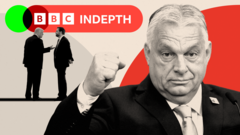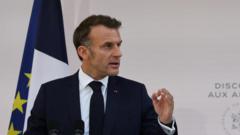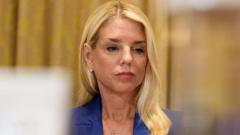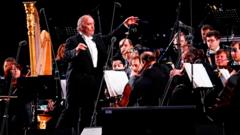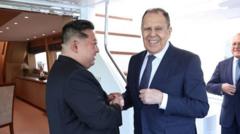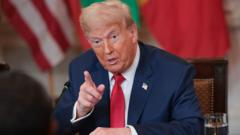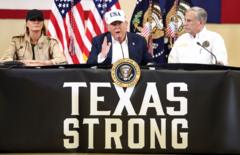As President Trump prepares to unveil his new arms strategy for Ukraine, he finds himself navigating shifting alliances and strategies reminiscent of prior administrations.
Trump's Evolving Stance on Ukraine Arms Support: A Shift Towards Sanctions

Trump's Evolving Stance on Ukraine Arms Support: A Shift Towards Sanctions
Former President Trump indicates a pivot towards arming Ukraine amid mounting pressure from European allies.
In the wake of increasing geopolitical tensions, former President Trump is set to announce a plan this week for the United States to supply arms to Ukraine, albeit indirectly through European allies. This strategy appears to echo aspects of the approach taken by his predecessor, President Biden, as Trump seeks to address the ongoing Russia-Ukraine conflict while maintaining a degree of distance from direct engagement.
Anticipated to take shape during Trump’s meetings with NATO Secretary General Mark Rutte at the White House, this new policy would see American weaponry routed to Kyiv via European nations, marking a significant departure from his earlier stance of skepticism towards direct U.S. involvement. Months after his inauguration, Trump's rhetoric surrounding the war has evolved as he confronts both domestic and international pressures for a more proactive role.
During the previous election cycle, Trump exhibited a willingness to publicly critique Ukraine, suggesting they bore responsibility for the strife instigated by Russia. However, his tone has shifted in recent discussions, where he has hinted at bipartisan support for sanctions against Russia that could impose steep tariffs on oil and gas sales, indicating a more aggressive stance towards isolation of President Putin’s regime.
While this apparent shift in policy is welcomed by some allies, skepticism lingers regarding Trump’s commitment and the potential for a backslide into previous isolationist rhetoric. Observers highlight the necessity for consistency in U.S. foreign policy amidst the rapidly changing dynamics of the Eastern Front, as Trump's administration must grapple with both the legacy of previous strategies and the immediate need for decisive action in the face of ongoing hostilities.
Anticipated to take shape during Trump’s meetings with NATO Secretary General Mark Rutte at the White House, this new policy would see American weaponry routed to Kyiv via European nations, marking a significant departure from his earlier stance of skepticism towards direct U.S. involvement. Months after his inauguration, Trump's rhetoric surrounding the war has evolved as he confronts both domestic and international pressures for a more proactive role.
During the previous election cycle, Trump exhibited a willingness to publicly critique Ukraine, suggesting they bore responsibility for the strife instigated by Russia. However, his tone has shifted in recent discussions, where he has hinted at bipartisan support for sanctions against Russia that could impose steep tariffs on oil and gas sales, indicating a more aggressive stance towards isolation of President Putin’s regime.
While this apparent shift in policy is welcomed by some allies, skepticism lingers regarding Trump’s commitment and the potential for a backslide into previous isolationist rhetoric. Observers highlight the necessity for consistency in U.S. foreign policy amidst the rapidly changing dynamics of the Eastern Front, as Trump's administration must grapple with both the legacy of previous strategies and the immediate need for decisive action in the face of ongoing hostilities.





